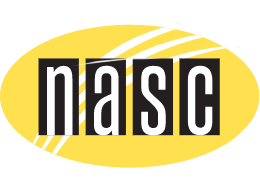Dog Tear Stains - Top Causes & How to Stop Them

Ever wonder: “why does my dog have tear stains all of a sudden?”
Dog tear stains are super common, especially in dogs with white or light-colored fur. Most of the time they’re harmless and a result of normal tear production, but excessive tears and staining can indicate a bigger problem.
Let’s take a closer look at the cause of dog tear stains, and how to stop them.
Cause of Dog Tear Stains
A wide variety of conditions can cause tear stains in dogs. However, these stains can also just be a harmless and natural result of the chemistry behind your dog’s tears. Here’s a closer look at the number one component that causes dog tear stains: porphyrin.
Porphyrin in Dogs
Porphyrin is a pigment found in tears. When tears evaporate, porphyrin is left behind, and it turns to a red, brown, or rust color as it’s exposed to oxygen for prolonged periods of time. So porphyrin is what causes those red-brown colored tear stains in dogs.
If you have a dog with white or light-colored fur, it’s natural for some staining to occur from porphyrin just as a result of natural tear production … especially if your dog has long fur around his eyes. Similar to eye boogers in dogs, these dog tear stains are not problematic as long as they aren’t excessive and your dog isn’t showing any other symptoms.
Epiphora in Dogs
If your dog has lots of dog tear stains, or they are very deep in color or accompanied by discharge, the problem is likely not excess porphyrin, but excess tear production, or epiphora. The excess tears that accompany epiphora in dogs are caused by eye irritation, or by the eyes being unable to drain tears correctly.
Epiphora in dogs can either be acute or chronic and can result from a wide variety of conditions, including:
- Shallow eye sockets: Brachycephalic dogs (dogs with shorter snouts) sometimes have eyes that bulge out, which can prevent the eyelids from fully closing, resulting in irritation and damage.
- Ear infection: Ear infections can cause the eye on the same side of the head as the infected ear to produce more tears than usual.
- Small tear duct openings or large tear glands: Sometimes epiphora in dogs can be genetic, and result from unique proportions of your dog’s eyes which can cause more tears.
- Scarring: If your dog has had past eye damage or infections, scar tissue can build up from these and interfere with tear drainage, causing build-up.
- Allergies: If you have allergies, you know they can sometimes cause watery, irritated eyes. Allergies in dogs can result in excessive tears for the same reason. Allergies in dogs can be seasonal, food-related, or even caused by home cleaning products.
- Glaucoma: Glaucoma causes fluid buildup in the eye, and this buildup can sometimes produce excess tears.
- Conjunctivitis and eye infections: When the eye is inflamed, it may produce excess tears, mucous, pus, or other discharge.
- Irritants: Smoke, dust, and allergens can all cause the eyes to produce more tears.
- Teething: Teething in puppies can be painful, and often accompanied by more tears than usual.
- Ingrown eyelashes: Ingrown eyelashes in dogs are usually genetic and more common in certain breeds
RELATED: Why are your dog's eyes red?
Are Tear Stains Bad For Dogs?
If you have a dog with white or light-colored fur and notice some light staining it’s likely nothing to be concerned about. Tear production is a normal function of healthy eyes, and some staining and eye boogers are a natural byproduct of the process.
However, if the tear stains are sudden or excessive, or accompanied by other symptoms of discomfort, pain, or infection, then it’s possible your dog has a more serious condition like those listed above. If you’re concerned, you can always err on the safe side and talk to your vet about your dog’s tear stains.
Can Dog Food Cause Tear Stains?
An inflammatory diet and lifestyle can cause epiphora, which may produce excessive dog tear stains. In particular, excess carbs and grains, and certain additives and preservatives can worsen or cause inflammation in dogs.
There’s no guarantee that cutting out corn, wheat, and other fillers from your dog’s diet will reduce his tear stains. But these foods aren’t great for long-term health, and do tend to have inflammatory effects. The worst case scenario is that you cut these foods out, your dog’s overall health improves, but the tear stains stay the same. So it’s never a bad idea to experiment with switching to a raw, nutritious diet with less inflammatory foods.
RELATED: Get started with a raw diet for dogs …
Best Way to Stop Dog Tear Stains
For dogs with white or very light fur, some staining from tears is normal and near impossible to stop completely. Tear production is necessary for healthy eyes, and some tear byproducts like eye boogers and tear stains are all a part of the process.
If your dog has excess tear stains, the best way to stop them is by finding the underlying cause. Review the section on epiphora above, and consider consulting your vet to find what’s causing excess tear production or tear drainage problems in your dog (hint: of all the causes above, the most common is probably allergies).
Aside from identifying the root cause of the tear stains and correcting the issue, the best thing you can do is to eliminate the appearance of the stains around your dog’s eyes if you don’t like how they look cosmetically.
Here are a few ways to get rid of dog tear stains naturally:
Trim the Fur Around Your Dog’s Eyes
Trimming the fur and hair around your dog’s eyes is one way to reduce staining. Plus, it can also help eliminate fur that is already excessively stained. While it’s a temporary solution (the fur will grow back) you might be surprised how much it reduces the look of dog tear stains.
Wipe Away Tears Frequently
If your dog is tearing frequently throughout the day or has problems with tear drainage, you can also carry a handkerchief or soft towel to wipe his tears intermittently throughout the day. Over time, this should help reduce dog tear stains.
Coconut Oil For Dog Tear Stains
When it comes to removing dog tear stains from fur, coconut oil is the best natural remedy for the job. Coconut oil has antibacterial and antifungal properties, but best of all, it also creates a protective layer that repels water, which prevents tears from soaking into the fur and skin.
Using coconut oil for dog tear stains is as simple as gently massaging some of the oil into the fur and skin around your dog’s eyes. You can use your hands or a cotton cloth … just avoid cotton balls because they can stick to the fur. And remember to wash your hands first so you don’t get any other bacteria around your dog’s eyes.
Finally: always opt for high quality organic, unrefined coconut oil. This will ensure there are no chemicals or additives to irritate your dog’s eyes.




